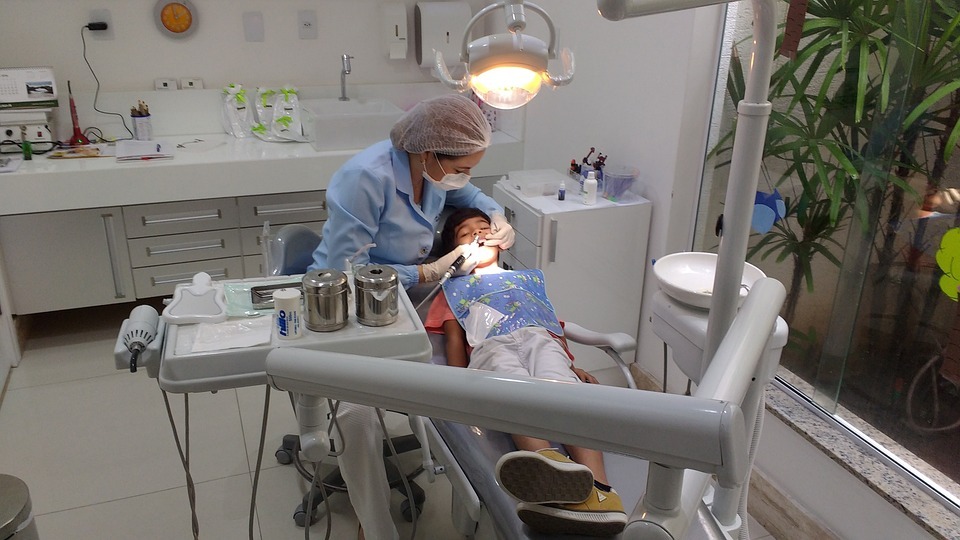Most children are very active and are prone to dental injuries that can affect their teeth growth or the development of facial structures. Traumatic dental injuries, often known as TDIs, can affect the mouth, face, head, and neck in some cases. Especially in general practice, the care of dental trauma can be a very stressful and intimidating experience. The good news is that you may take precautions against these incidents and be ready to assist your child if they sustain an injury. In addition, your child can get back to the playground faster if you are prepared with some helpful guidelines and a basic understanding of emergency dental care.
What to do with Traumatic Dental Injuries?
The first and most recommended thing is to go to the dentist immediately. Junior Smiles of Stafford, a pediatric dentist in Fredericksburg, VA, specializes in treating traumatic dental injuries. Consulting with them can help avoid the possible injuries that can come after dental trauma, such as tooth loss or crooked teeth. Their dentists will give your child everything that they need to recover and continue developing a great set of teeth.
After dental trauma, the patient may bleed from the gums or the socket where the tooth used to be. A bruise or swelling may develop in the area of the body where the trauma occurred. Teeth injuries can harm a single tooth or several teeth all at once. A tooth may be completely or partially avulsed from its socket or sustain chip damage. It’s also possible that there’s a full fracture in the tooth. Everyone who comes into contact with children and teenagers, such as babysitters, coaches, teachers, and school nurses, ought to be aware of TDI management and the importance of getting a dental exam as soon as possible after an accident. The following should be done as a general rule if you sustain damage to your mouth or teeth from an accident:
- Please ensure that no bleeding is present.
- Apply pressure on the wound to staunch the bleeding.
- The wound should be rinsed with salt water or an antimicrobial solution.
- Examine how terrible it is.
- If your child has been injured, you should immediately visit a doctor or dentist.
To minimize swelling, use a cold compress or ice pack on the affected area. It is essential to explain to your child that the dentist can treat their teeth and make them feel better. If your child cannot keep the tooth in their mouth, you can protect the root by placing the tooth in a cup of milk or saliva. If a tooth seems to be fractured or otherwise damaged, you should still visit the dentist to determine whether it may be salvaged.
If a traumatic dental incident occurs, your pediatric dentist will be able to see what the teeth looked like before the accident if all parents are encouraged to take close-up images of their children’s teeth on a regular basis. A close-up photo of the injured teeth and surrounding tissues taken just before any teeth are moved can also help with long-term care planning.
How to be Prepared In Case of Traumatic Dental Injuries
As you may now know, active children are more prone to dental injuries, and oftentimes, we can’t do anything about it. Unfortunately, children are children, and we have to accept that we can’t control how they move and how they play. But there’s one thing we can do, be prepared.
Preparation can help prevent infections and other severe effects of traumatic dental injuries. We suggest that you prepare a dental first aid kit at home. You can include the following:
- Gauze.
- A little mouthwash cup.
- Mouthwash.
- A cooling compress.
- A tooth storage container or a cap-sealed bottle.
Put the dental first aid kit with your regular first aid kit in an easily accessible location. If your child gets hurt in the face, you should take them to the dentist as soon as possible. When you see a doctor right away, they can tell you if a tooth can be saved or if it needs to be pulled out and replaced with an implant or denture. Broken teeth don’t always look like they’re hurt, so it’s possible that your child needs X-rays. After a tooth is knocked out or pulled, you should see your dentist as soon as possible to avoid infection, stop bleeding, check the bite, and find out if a dentist or orthodontist needs to put a mouth spacer in.
Conclusion
Little kids whose motor skills are still developing and teens who play sports are most likely to hurt their teeth. Orofacial injuries can cause pain, tooth loss, dysfunction, and a lower quality of life. If you act quickly and decisively, you can keep your child’s teeth from being damaged for good. You should always have a dental first aid kit ready, and if you play sports, you need a mouthguard to protect your teeth. With these tips, you are ready for any kind of dental emergency. Lastly, dentists will be able to give the best care if they regularly get training and education in dental trauma.

